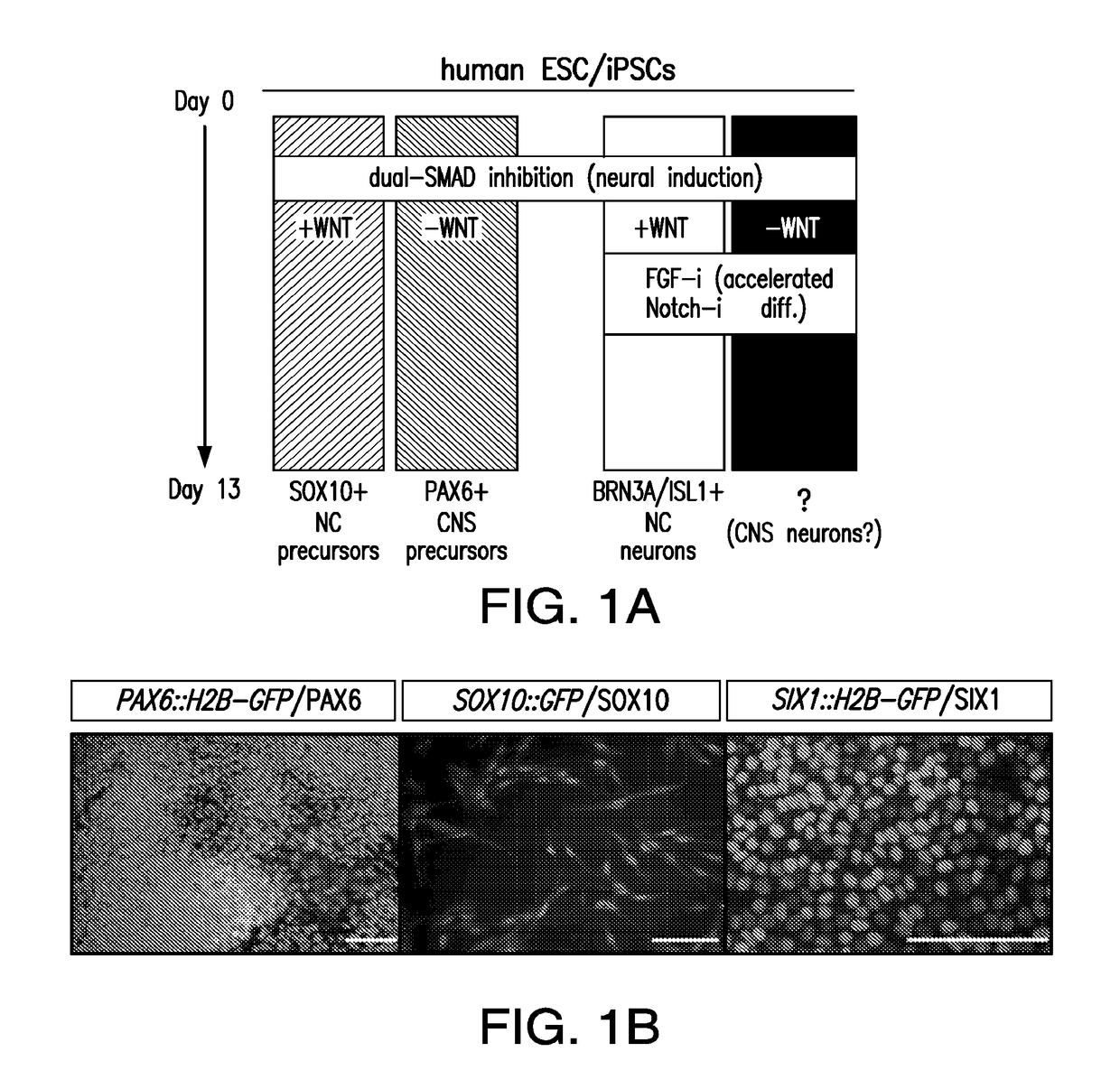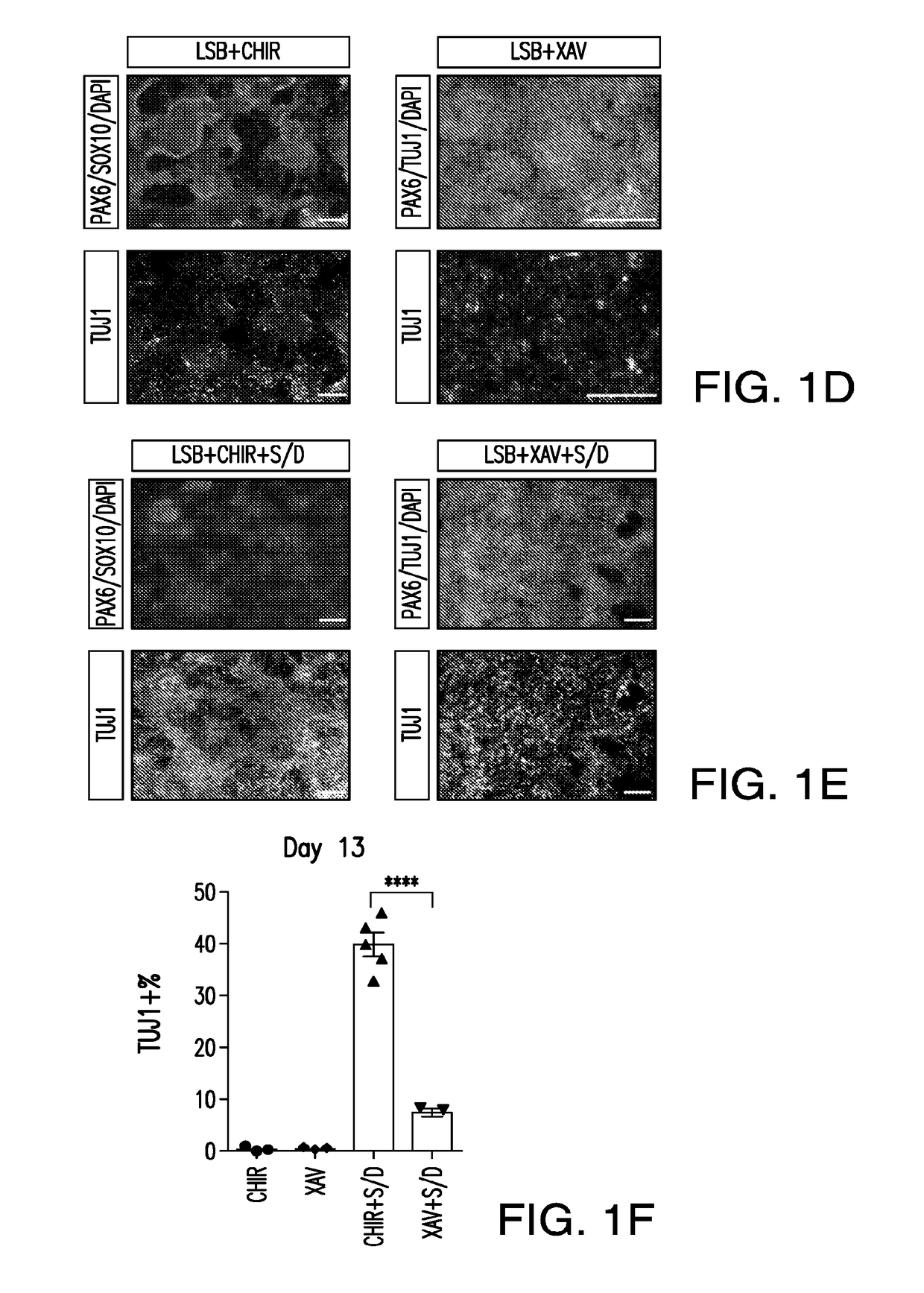Differentiation of cortical neurons from human pluripotent stem cells
a technology of human pluripotent stem cells and cortical neurons, which is applied in the direction of embryonic cells, non-embryonic pluripotent stem cells, drug compositions, etc., can solve the problems of hpsc-derived lineages hampered in disease modeling and regenerative medicine, and the timing of human neuron specification and functional maturation is long
- Summary
- Abstract
- Description
- Claims
- Application Information
AI Technical Summary
Benefits of technology
Problems solved by technology
Method used
Image
Examples
Embodiment Construction
[0052]The presently disclosed subject matter relates to methods of preparing cortical neurons derived from human stem cells, e.g. by in vitro differentiation of human stem cells to functional cortical neurons, and cells produced by such methods. Also provided are uses of such cells for treating a CNS neurodegenerative disorder.
[0053]For purposes of clarity of disclosure and not by way of limitation, the detailed description is divided into the following subsections:[0054]5.1 Definitions;[0055]5.2 Methods of Differentiating Stem Cells;[0056]5.3 Compositions Comprising Differentiated Cell Populations;[0057]5.4 Methods of Preventing and / or Treating CNS Neurodegenerative Disorders; and[0058]5.5 Kits
5.1 Definitions
[0059]The terms used in this specification generally have their ordinary meanings in the art, within the context of this invention and in the specific context where each term is used. Certain terms are discussed below, or elsewhere in the specification, to provide additional gu...
PUM
 Login to View More
Login to View More Abstract
Description
Claims
Application Information
 Login to View More
Login to View More - R&D
- Intellectual Property
- Life Sciences
- Materials
- Tech Scout
- Unparalleled Data Quality
- Higher Quality Content
- 60% Fewer Hallucinations
Browse by: Latest US Patents, China's latest patents, Technical Efficacy Thesaurus, Application Domain, Technology Topic, Popular Technical Reports.
© 2025 PatSnap. All rights reserved.Legal|Privacy policy|Modern Slavery Act Transparency Statement|Sitemap|About US| Contact US: help@patsnap.com



